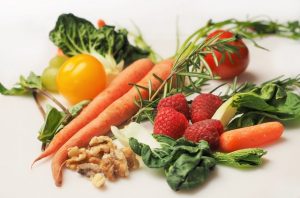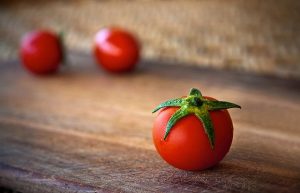Blood pressure refers to the force your heart has to pump in order to push blood through your blood vessels. This is important because blood delivers oxygen and nutrients to the rest of your body.
What is high blood pressure?
Think of your blood vessels as highways that are used to a certain number of cars traveling on them. When you have high blood pressure, it’s like your highways have too many cars trying to move through them. Uncontrolled high blood pressure can damage your arteries, heart, brain, and kidneys. [1]
One of the most important things you can change in your diet to reduce your blood pressure is limit your sodium intake. Check out our blog on sodium for more information on what sodium is, what happens if you eat too much of it, and why it matters for your blood pressure. Now, let’s dive into your most asked questions about nutrition and blood pressure.
1. Why is potassium important for blood pressure?
A contributor to high blood pressure is having too much fluid in the body. Extra fluids make it difficult for blood vessels to transport more than they normally do. Potassium and sodium normally work together in your body to help maintain the proper balance of fluids. They do this by removing any extra fluids through urine. [2]
Having more sodium than potassium in the body can throw the balancing act off. Using the traffic comparison, those extra fluids are like extra cars running through the highway of your blood vessels. Eating more potassium can help restore that balance with sodium and remove excess fluids. This means that your blood vessels don’t have to work as hard and your blood pressure can decrease.
It is recommended that average adults eat about 4,700 milligrams of potassium a day. That number seems like a lot but it’s not as hard to meet as it sounds. Just ½ cup of cooked spinach has about 420 milligrams of potassium! In fact, fruits and vegetables in general are excellent sources of potassium. You can have too much potassium, however. To avoid this, try to get your potassium from food rather than from taking supplements.
| Food | How much? | Potassium (mg) |
| Banana | 1 medium | 422 |
| Orange juice | 6 fluid ounces | 372 |
| Tomato juice | 6 fluid ounces | 417 |
| Raisins | ¼ cup | 272 |
| Lima beans | ½ cup, cooked | 485 |
| Baked potato | 1 medium, with skin | 926 |
| Spinach | ½ cup, cooked | 420 |

Table adapted from Oregon State University [3]
2. What is the DASH diet?
The DASH diet is a low-sodium diet for people trying to lower their blood pressure. DASH stands for Dietary Approaches to Stop Hypertension. The diet is rich in fruits, vegetables, low-fat dairy foods, whole grains, beans, nuts, poultry and fish. The diet tends to be lower in sugar and saturated fat. It also provides a good amount of the nutrients that help lower blood pressure, like potassium, magnesium, and fiber. [4]
Here are a few easy tips to get started with the DASH diet from the National Institutes of Health:
- Add a serving of vegetables at lunch one day. Add a piece of fruit to dinner or eat it as a snack.
- Include two or more meatless meals each week. Replace meat with other sources of protein, such as tofu or beans.
- If you usually eat large portions of meat, cut your portion in half at each meal for a few days.
3. If I cut back on salt will I get enough iodine?
Iodine is a mineral that helps your body make certain hormones. Your body does not make iodine so you need to get it from your diet. One way to get iodine in your diet is through salt that has been “iodized”, which means that it had iodine added during processing.
Do you need to be worried about iodine when cutting back on the salt shaker? Thankfully, salt from the salt shaker provides only a fraction of the daily iodine intake for most Americans. Because over 70% of sodium in the average American’s diet comes from prepared and processed foods, it is important to note that most food companies do not use iodized salt. These processed and prepared foods are a great place to start trimming sodium from your diet without an effect on your iodine intake.
Make sure to eat other sources of iodine if you are someone who needs to lower their salt intake. It makes sense to get iodine from food. Iodine can be found in the following foods [5]:
- Dairy products
- Soy milk
- Saltwater fish and seaweed
- Shellfish
- Eggs
4. How can fruits and vegetables help lower high blood pressure?
Fruits and vegetables are rich in nutrients that can help lower blood pressure. [6] These nutrients include potassium, calcium, and magnesium. [2] Fruits and vegetables can also indirectly help prevent obesity, a risk factor for high blood pressure, when they replace higher calorie items on your plate. That’s why fruits and vegetables are at the heart of the DASH diet!
Written by Taylor Newman, Ph.D. Candidate | Edited by Laurel Sanville, MS, RDN, LD
Tomato original photo source
Blood pressure original photo source
Vegetable original photo source
[2] American Heart Association

